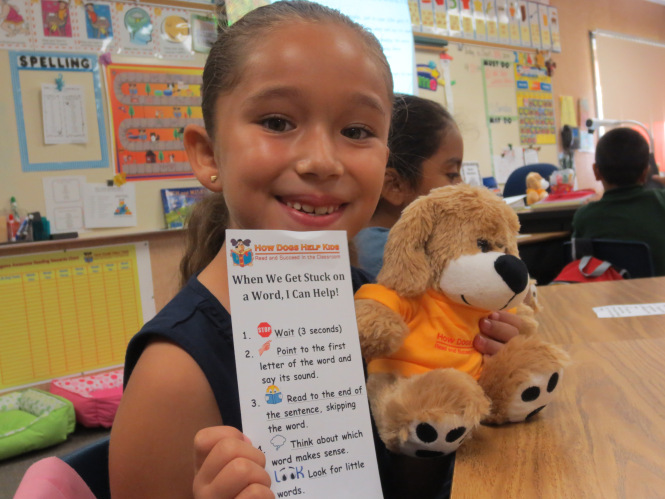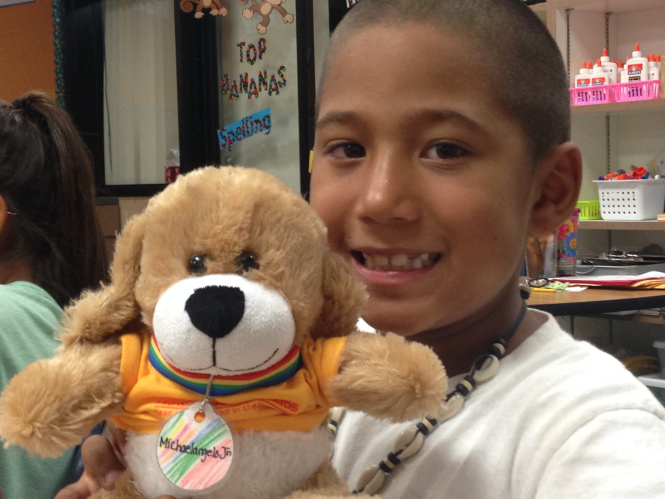Word Study Strategies when Kids Read with Dogs
 One of the biggest challenges children face when they are learning to read is knowing what to do when they come to a word they don't know. Too often we tell children to just "sound it out," which is often difficult or even impossible when they come across words that we refer to as "sight words." Click here to see a list of the 300 most common sight words in children's books. Teaching children strategies they can use to determine unknown words (we call them "Tricky Trouble Words" in our How Dogs Help Kids Read and Succeed In the Classroom program), can help children to feel empowered to figure out tricky words when reading independently.
One of the biggest challenges children face when they are learning to read is knowing what to do when they come to a word they don't know. Too often we tell children to just "sound it out," which is often difficult or even impossible when they come across words that we refer to as "sight words." Click here to see a list of the 300 most common sight words in children's books. Teaching children strategies they can use to determine unknown words (we call them "Tricky Trouble Words" in our How Dogs Help Kids Read and Succeed In the Classroom program), can help children to feel empowered to figure out tricky words when reading independently.
When children read with a dog (or stuffed animal, or other pet - I've even had kids who have read to their goldfish and lizards!), the animal serves as a non-judgmental audience for their reading efforts. Brian Cambourne, an Australian educational researcher who has developed a model for the Conditions for Literacy Learning, notes that children need to feel safe to take risks in a warm and accepting environment in order to learn. Because animals don't tell children when they are making mistakes and accept children where and as they are, reading with animals can be a wonderful alternative to practicing developing skills with adults - who at times, lovingly interfere perhaps more than we mean to. :-) Positioning the child as a "partner" or even at times as a "teacher" in learning with their pet or stuffed animal empowers the child to acknowledge and celebrate all that they do know. Saying things like, "I don't think (Sparky) knows that word either - do you think maybe we could teach it to him together?" will help the child to realize that they already know quite a bit!
Here are some word study strategies you can share with your child when they get stuck on a word they don't know. Learning these strategies will help children become increasingly independent when reading aloud with their pet or stuffed animal:
1. Stop: Sometimes just waiting 3 seconds before doing anything will help a child to make sense of what they are reading, and figure out the word on their own. We are often too quick to jump in and help, when in fact children are already processing what that word could be.
2. Point to the first letter in the word and say its sound.
3. Read to the end of the sentence, skipping the word.
4. Think about which word might make sense.
5. Look for little words in the big word.
6. Look at the picture for clues.
7. If your dog still doesn't get it, it's ok to TELL him the word. (Ask for help)
I hope these strategies help to enhance your child's reading experience!

